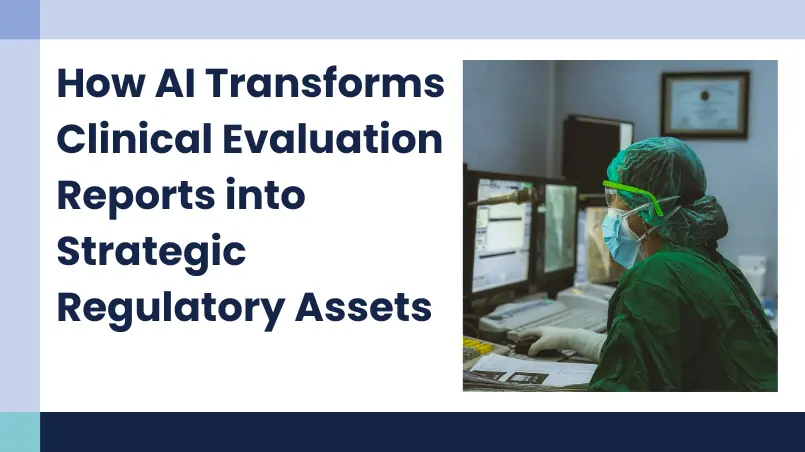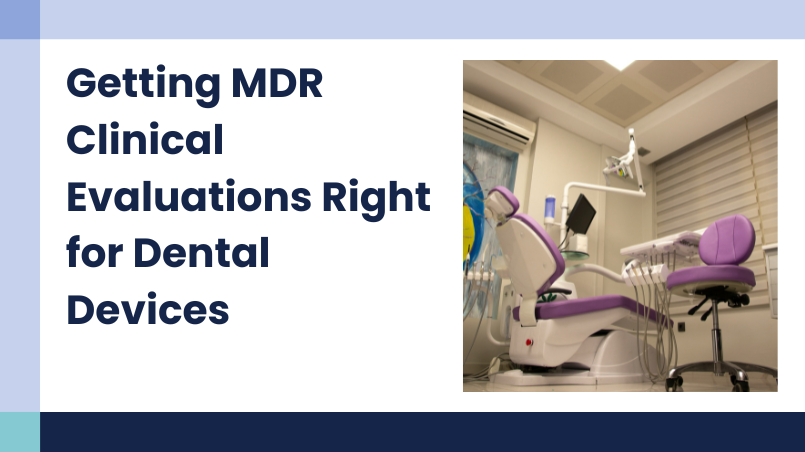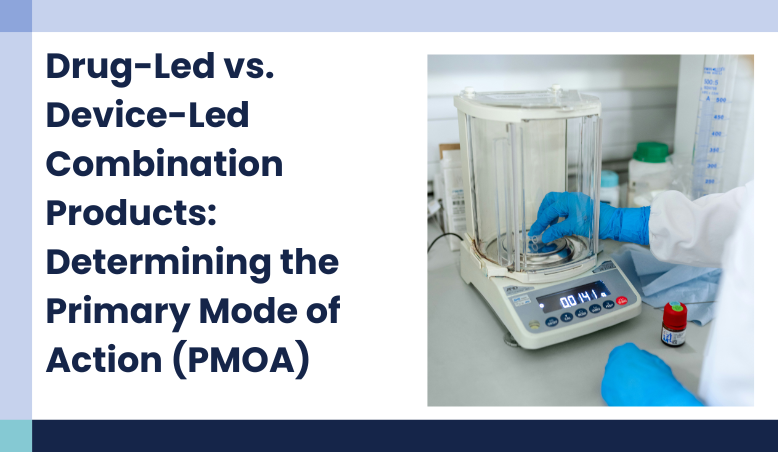AI in Medical and Technical Writing: Moving Beyond the Hype to Real-World Impact
Beyond Europe: The Strategic Value of CERs in FDA Submissions

14 May, 2025
Clinical Evaluation Reports (CERs) are often associated with EU MDR, but an increasing number of manufacturers are now integrating CERs into their FDA submissions, particularly for devices requiring robust clinical evidence. This approach allows manufacturers to present a clear, comprehensive clinical evidence package, ensuring alignment with FDA expectations and reducing review timelines.
CERs in the Context of FDA Submissions
Unlike the EU MDR, the FDA does not mandate a standalone CER as part of a 510(k) or PMA submission. However, substantiating safety and performance of a device through clinical data is a fundamental expectation of the FDA. Clinical evidence plays a pivotal role in FDA review, especially for:
- Novel devices without predicates
- De novo applications
- Devices with high-risk profile
- PMA supplements requiring new safety data
What to Watch For: Common Pitfalls
- Inadequate Clinical Data
An unsystematic literature review may result in inclusion of irrelevant or inadequately appraised clinical data, or poorly analyzed data. Additionally, relying on EU-based data without appropriate consideration of its relevance to the U.S. clinical context can further weaken the submission. - Lack of Understanding of Submission Types
Submitting the wrong type of application may lead to significant delays or rejection. Failing to understand the specific requirements associated with the chosen submission type can lead to missing critical information. - Unsubstantiated Clinical Claims
If the clinical data does not directly support the intended use or labelling of the device, it may lead to questions from the reviewer or delays. Each safety and performance claim should be clearly substantiated with traceable evidence. - Underutilization of Real-World Evidence (RWE)
Adverse event trends, registry data, and post-market studies provide real-world evidence that can further enhance the risk-benefit assessments. Not leveraging this data is a missed opportunity to strengthen the submission. - Lack of integration across submission sections
Lack of alignment between clinical, risk, and labeling sections can make it difficult for reviewers to interpret the submission. Maintaining consistency across all sections is essential.
Considerations for a CER aimed at FDA Review
Although CERs are not mandated by FDA, manufacturers should consider the following when drafting a CER to support regulatory submissions:
- Discussion of data relevance, especially for U.S. population
- Clear summary of the clinical evidence, including published literature, registry data, and clinical trials
- Analysis of risks, adverse events, and benefits in alignment with device labeling
- Refer to FDA-recognized standards and guidance, like 21 CFR 814 or the Clinical Evidence Premarket Submission guidance
Useful Tools & Resources
Developing CER content for FDA submissions can be time-consuming, particularly when teams are handling multiple submissions or working under tight timelines. The following tools and data sources can help streamline the process:
- FDA MAUDE Database – for adverse event data and comparator analysis
- ClinicalTrials.gov – to identify relevant ongoing and completed clinical trials
- PubMed and Embase – to identify relevant peer-reviewed clinical literature
- FDA Guidance Documents – to align the CER content with FDA expectations
- FDA CDRH Learn – to stay updated on submission requirements and review trends
These resources are most effective when used strategically, supported by internal alignment and medical writing expertise.
How Celegence Supports CER Preparation for FDA Submissions
Preparing a CER or clinical justification for FDA review isn’t just about data gathering. It’s about crafting a clear, well-structured narrative supported by robust evidence. This is where Celegence adds value.
We combine regulatory expertise with technology to deliver submission-ready CERs, literature reviews, and clinical summaries—on time and in line with FDA expectations.
What sets us apart?
- Clinical writers experienced in FDA and EU submissions
- AI-powered literature reviews and data extraction using CAPTIS®
- Integration of FDA databases and guidance documents into writing workflows
- Quick turnaround times for 510(k), PMA, and De novo pathways
- 99% first-time acceptance rate of clinical documents by regulatory reviewers
Whether you need a literature-based justification, a full CER-style report, or gap analysis of your existing documentation—we offer flexible solutions for every stage of development and submission.
Let’s Work Together
Need help aligning your clinical evidence with FDA expectations? Celegence delivers accurate, regulatory-ready CER support backed by proven expertise and AI tools. Contact our team today to get started.
Other Related Articles

11 Nov, 2025

03 Oct, 2025

19 Sep, 2025

01 Sep, 2025

26 Aug, 2025



